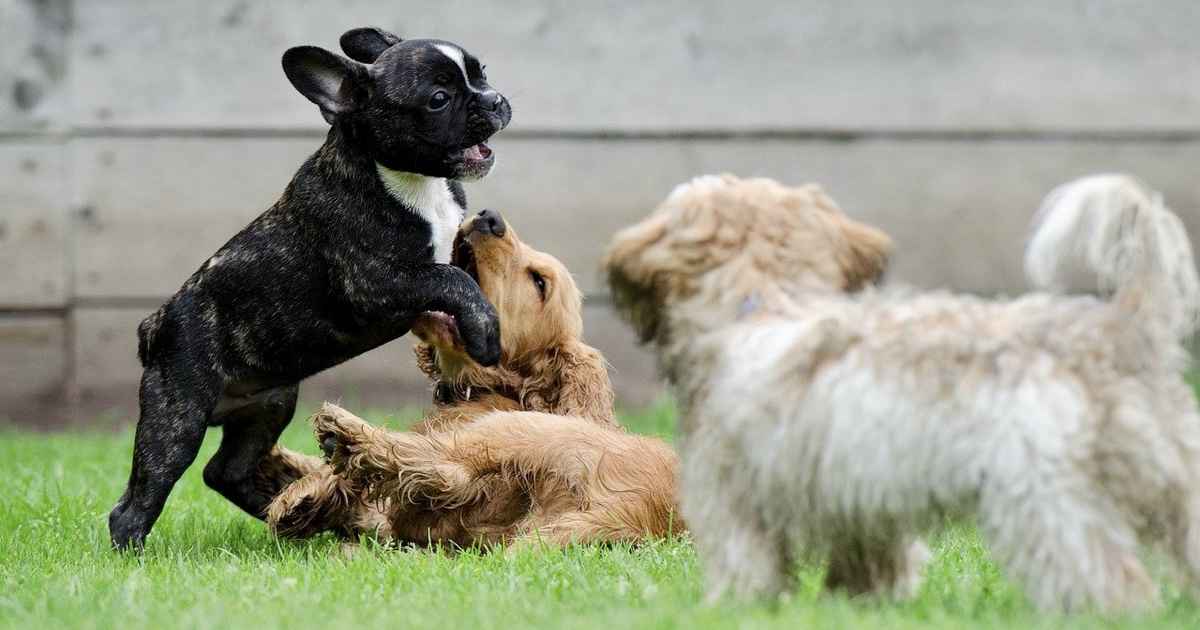Updated July 17, 2022
Here you will find a checklist of suggested experiences for Australian puppies before 14 weeks of age. By following our advice, your puppy should grow to be a less fearful and happier adult dog.
Limited puppy preschool places are also available at our clinic on Wednesday and Thursday nights.
Why Socialisation Matters
The simple message is this: whatever a puppy has never experienced in a positive way before 14-16 weeks of age is likely to cause fear later.
This brief time is called the sensitive period. It’s when they soak up sights, sounds, smells and new experiences, and say, “this is what my life will contain, and it’s all good”.
Puppy preschool is an integral part of this, by encouraging dog sociability. Just as important is making sure that your puppy experiences what you do. They need to meet lots of different people, go to a variety of places and see, smell and hear a wide range of stimuli.
In the process they normalise these experiences. That way, their life becomes exactly as they expect it to be, and it’s a fun one.
Now contrast all this with the puppy who’s left at home. The lack of dog socialisation makes them fearful of other dogs, so that in time they learn to keep them away using aggression. They rarely play with strange dogs, and instead try to avoid them.
The lack of environmental exposure at the critical time makes them afraid of the world. Anything outside the their narrow social upbringing now gives them fear and anxiety. This might be strangers, cars, crowds or (highly embarrassingly) people who look different.
A Puppy Socialisation Checklist
Just have a look at this checklist of recommended positive experiences for puppies. As you do, think how many of these things we can still do easily. Afterwards, I’ve got some suggestions for using it.
| People | 1 | 2 | 3 | 4 | 5 |
| People at the front door | |||||
| Unfamiliar people of all genders | |||||
| Tall men or women | |||||
| Men with loud voices | |||||
| Men with beards | |||||
| Elderly people | |||||
| People of many ethnicities | |||||
| People wearing hats, helmets | |||||
| People wearing high boots | |||||
| People wearing hoodies, high vis | |||||
| People wearing backpacks | |||||
| People wearing sunglasses | |||||
| People with walking sticks or frames | |||||
| Teenagers | |||||
| Children (quiet & playing) | |||||
| Toddlers (walking and squealing) | |||||
| Babies (crawling) | |||||
| People running or riding by | |||||
| Homeless people | |||||
| Crowds | |||||
| Animals | |||||
| Friendly dogs (both calm & excitable) | |||||
| Dogs of all sizes who play well with other dogs | |||||
| Cats | |||||
| Horses and livestock | |||||
| Any other species your puppy will meet | |||||
| Different surfaces | |||||
| Slippery floors (hardwood, vinyl, tiles etc) | |||||
| Unstable & irregular surfaces | |||||
| Stairs (metal, wood and solid) | |||||
| Grass | |||||
| Mud, sand, gravel | |||||
| Manhole covers & other metal surfaces | |||||
| Ice, frost, or snow (if needed) | |||||
| Scary noises | |||||
| Thunder & heavy rain | |||||
| Live or amplified music | |||||
| Babies and kids | |||||
| Dogs barking | |||||
| Alarms & sirens | |||||
| Bird noises | |||||
| Loud traffic noise | |||||
| Jackhammers | |||||
| Vacuum cleaners | |||||
| Lawnmowers, leaf blowers etc | |||||
| Hairdryers | |||||
| Gunpowder (fireworks, nail gun, bird scarer) | |||||
| Wheeled things | |||||
| Skateboards & rollerblades | |||||
| Mobility scooters | |||||
| Electric scooters | |||||
| Wheelie bins | |||||
| Shopping carts | |||||
| Baby strollers | |||||
| Wheel chairs & chairs with wheels | |||||
| Bikes | |||||
| Cars (stationary & moving) | |||||
| Buses & trucks | |||||
| Motorcycles & scooters | |||||
| Miscellaneous objects | |||||
| Blankets or rugs being shaken | |||||
| Brooms | |||||
| Balloons | |||||
| Umbrellas | |||||
| Sandwich board signs | |||||
| Plastic bags blowing in the wind | |||||
| New environments | |||||
| Suburban streets | |||||
| City streets | |||||
| Escalators & lifts | |||||
| Shopping centre car parks | |||||
| Inside buildings | |||||
| Open spaces | |||||
| Dog boarding (if needed later) | |||||
| Techniques | |||||
| Electric clippers (ideally at the salon) | |||||
| Nail trimming | |||||
| Checking between toes & in ears | |||||
| Toothbrushing (if planned) | |||||
| Chewing bones (read this first) |
Socialisation Guidelines
So here are my suggestions for doing everything possible:
- It will be impossible to cover every point on this list; focus on the experiences that your puppy needs to be comfortable with and don’t worry about the rare or unlikely ones unless you have plenty of spare time.
- I’ve put five check boxes but just get in as many as you can. Many of these you can do or simulate at home but I have no faith in sound recordings as a substitute for real sounds. Remember that each exposure needs to be a happy one.
- You can probably tick off 3/4 of your list just by making sure your puppy goes where you do as much as possible. Vaccines are available that allow puppies to walk from 11 weeks of age* so get on the streets, into parks and down the beach.
- Ask your vet about the rate of parvo in your area. Some suburbs are so low in risk that even walking an unvaccinated puppy might be allowed in certain areas.
- During walks, ask well-meaning people of all ages, sizes and appearances to make friends with your puppy.
- To socialise to a wider range of people, visit other people’s houses, such as an old couple up the street.
- Seek out friends with good-natured dogs and do the same, this time for dog socialisation.
- Take the time to also teach your puppy to be able to be alone without anxiety. This must be a gradual process, often helped by crate training.
- Seek help from the experts. Our puppy preschool instructor, Susanne Eckert (and many like her) is also available for private one on one sessions.
What I wouldn’t do much is use your walks as a way to meet other dogs. Yes, some encounters are great, but I’ve written before about the common problem of on-leash aggression. Too much of it could change how your pup relates to other dogs for good.
Remember: every experience must be a positive one. Make sure your puppy stays relaxed throughout and don’t overwhelm them with too much at once.
Now, it’s over to you.
* These vaccines are given at 10 weeks of age. Ask your vet for more details. If your puppy is not fully vaccinated yet, you can still socialise safely by:
- Taking him for car rides – stopping the car, put the window down or open the door, letting him view the environment from the inside of the car, or outside of the car in your arms
- Use a picnic blanket and lead to contain your puppy while at the park or watching people and dogs in the distance
- If you are able, carry your puppy around to different places, i.e. outside of kids play areas, quiet shopping areas
Have something to add? Comments (if open) will appear within 24 hours.
By Andrew Spanner BVSc(Hons) MVetStud, a vet in Adelaide, Australia. Meet his team here.


Brilliant advice and shared to several FB dog groups.
Thanks Andrew, if only I had been able to read such an article when our doggies were young! Stay safe x